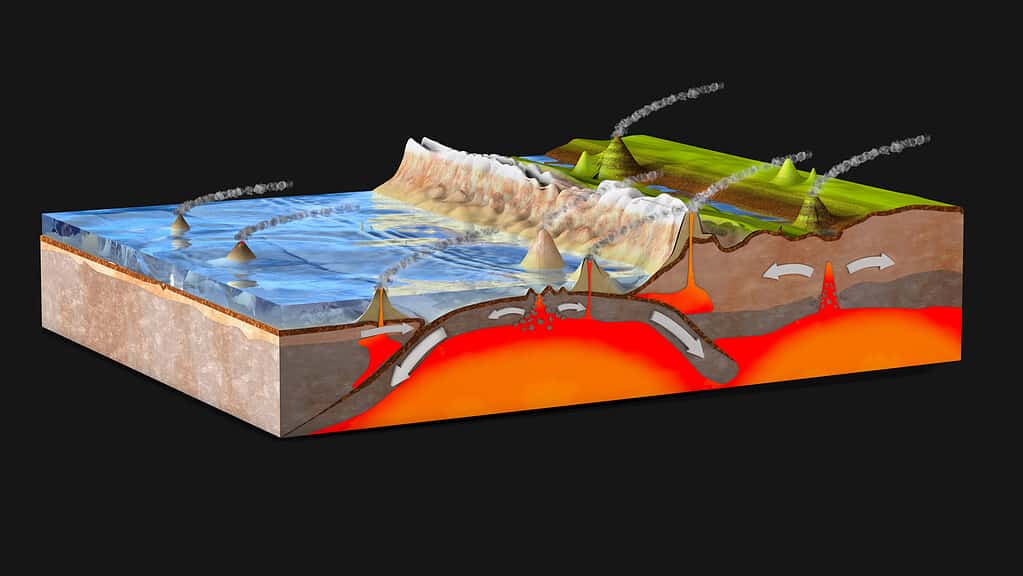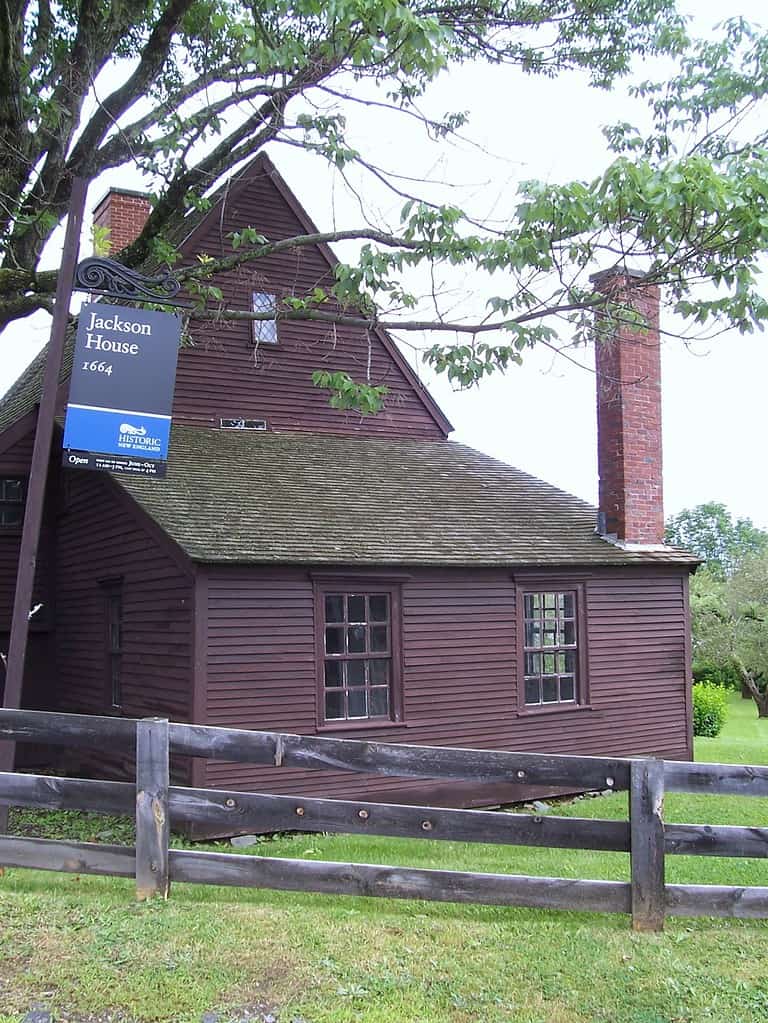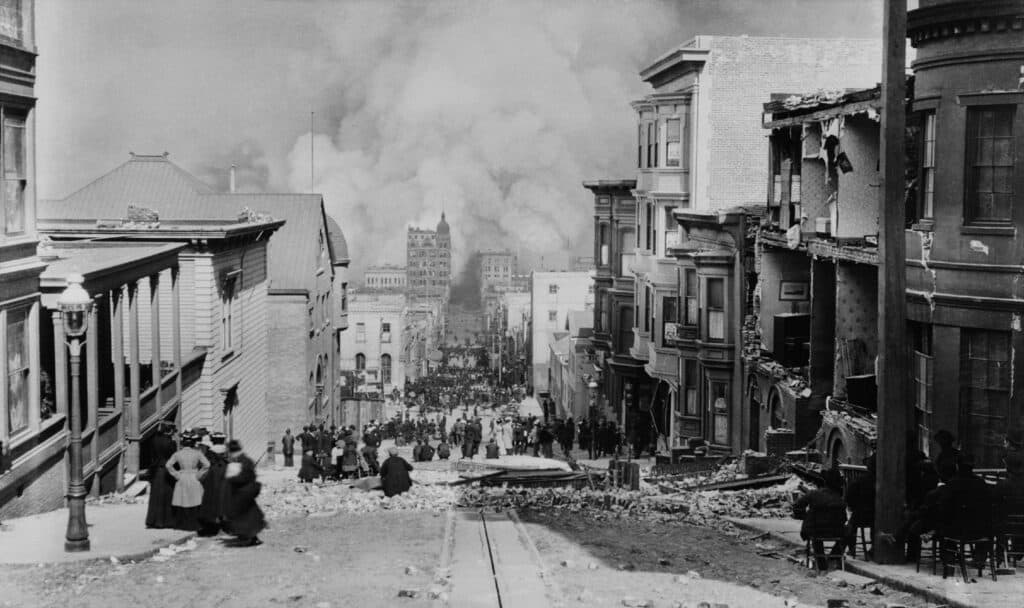Colorado is a mountainous, seismically active state. Fortunately, most of the earthquakes that strike the state are not that powerful. One earthquake in the Centennial State was more powerful than any other recorded in the state. Today, we’re going to show you everything you need to know about Colorado’s most powerful earthquake! Discover its power, the area it affected, and the impact it had on people living near the epicenter!
What Was Colorado’s Most Powerful Earthquake?

Fort Collins is close to the quake’s epicenter.
©iStock.com/marekuliasz
| 1882 Fort Collins Earthquake | |
|---|---|
| Moment Magnitude (Mw) | 6.6. Mw |
| Epicenter | 40.500°N 105.500°W |
| Date | November 8, 1882 |
| Intensity | VII |
Colorado’s most powerful earthquake was a 6.6 Mw event that struck on November 8, 1882. According to the United States Geological Survey, the quake occurred at roughly 6:30 p.m. local time on November 7, but it is considered November 8 at 1:30 p.m. when using UTC.
The seismic event had an intensity listed as VII or very strong shaking on the Modified Mercalli intensity scale. Although the shaking was powerful, the damage to most buildings was minor. Chimneys may have broken as they tend to do during quakes. The depth at which the quake struck is unknown, though.
The listed epicenter may not have been the actual source of the earthquake. Fewer than 200,000 people lived in the state at the time, and the area directly impacted by the quake was sparsely populated.
Interestingly, since this earthquake occurred on an election day, it received a fair amount of attention in the media. Newspapers like the Boulder Herald and the Longmont Ledger talked about the quake and made light of its occurrence on election day. Fortunately, the extra information from these newspapers helps our modern understanding of the event.
What Caused Colorado’s “Big One?”

Most earthquakes are near plate boundaries like the model above.
©Christoph Burgstedt/iStock via Getty Images
Very little information exists about the cause of Colorado’s most powerful earthquake. We know that the quake was an intraplate event since it is far from tectonic plate boundaries. The Front Range, a mountain range in the Southern Rocky Mountains, has many active faults that may have been the quake’s point of origin. The exact type of fault involved with this quake remains a mystery.
Finding the Epicenter of Colorado’s Most Powerful Earthquake
Scientists believe that the epicenter of Colorado’s largest earthquake occurred at 40.500°N 105.500°W. When looking at this location on a map, we can see that it is in a very mountainous part of central northern Colorado. The epicenter is 20 miles west-southwest of Fort Collins, about 35 miles northwest of Boulder, and roughly 55 miles from downtown Denver.
The epicenter’s location near Denver, which had a population of over 30,000 people, ensured the quake was noticed and felt by quite a few people.
The Damage and Casualties Caused by the 1882 Quake

Chimneys are often damaged by earthquakes over 5 in magnitude.
People felt the 1882 earthquake in Colorado, Wyoming, Kansas, and Utah. However, the quake mostly left minor damage to infrastructure in its wake. For example, electricity in Denver was temporarily knocked out as a result of damage to a power-generating facility. Windows cracked, chimneys fell, and structures as far away as Laramie, Wyoming sustained damage. Although the earthquake was 6.6 Mw and had a reasonably high intensity, it was not powerful enough to cause major damage.
Judging by the minor damage the earthquake inflicted upon the area, readers can probably guess that no casualties were reported. As far as we know, nobody was injured or killed by this quake. That’s impressive for the most powerful earthquake to strike the state.
Other states have not been so lucky in terms of damage and casualties. For example, the 1906 San Francisco earthquake killed between 700 and 3,000 people, destroyed 28,000 buildings, and left 225,000 people homeless. The economic costs were also severe. The estimated property damage from the earthquake reached upwards of $400 million in 1906 dollars!
Have Any Recent Quakes Matched Colorado’s Strongest Seismic Event?

People looking at damaged buildings after the 1906 earthquake in San Francisco, California.
©Everett Collection/Shutterstock.com
The most recent earthquake that has come anywhere close to Colorado’s most powerful earthquake happened in 2011. The 2011 Colorado Earthquake was a 5.3 Mw event. The quake struck in the southern part of Colorado, not far from the border with New Mexico.
The quake occurred on August 23, 2011, at 5:46 a.m. MDT. It was the largest quake not caused by injection wells to hit the state since the 1882 event. Although the quake scared people in the area, it did not cause significant damage, and nobody perished as a result. Interestingly, the 2011 Virginia earthquake struck hours later. So, large swaths of the country felt unusually strong earthquakes in a short timeframe.
All in all, Colorado’s most powerful earthquake was not exceptionally powerful or deadly. The state’s location certainly protects it from powerful quakes. However, a future 6.0+ magnitude quake would cause far more damage than the one in 1882. The state is far more populated now, and it has large cities, ski resorts, and critical infrastructure in areas prone to earthquakes. Fortunately, stakeholders in Colorado are keenly aware of the threat and have taken steps to mitigate damage to the region in the event of a future earthquake.
The photo featured at the top of this post is © Galyna Andrushko/Shutterstock.com
Thank you for reading! Have some feedback for us? Contact the AZ Animals editorial team.







